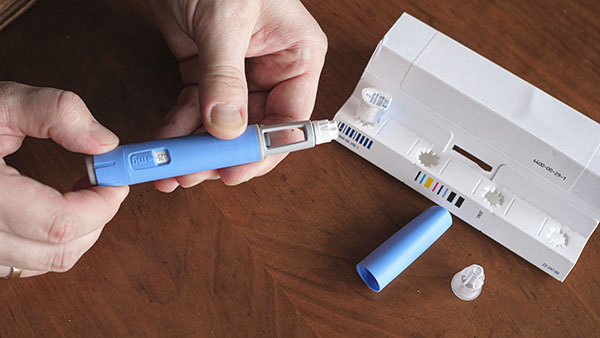- Ozempic and similar drugs are linked to sudden, severe vision loss, including blindness, as reported in a JAMA Ophthalmology study.
- Rapid blood sugar reduction from these drugs may damage eye blood vessels, causing irreversible conditions like NAION.
- Novo Nordisk faces scrutiny for aggressive marketing while downplaying serious side effects of Ozempic and related medications.
- Experts urge caution, recommending gradual dosage increases and FDA-mandated post-marketing surveys to assess risks.
Some users of the popular weight loss and diabetes drug Ozempic are reporting sudden and severe vision loss, with some experiencing blindness after just one dose.
The drug, manufactured by Danish pharmaceutical giant Novo Nordisk, has been hailed as a miracle solution for weight management and diabetes control. However, a growing number of cases suggest that Ozempic and similar medications may carry devastating risks, including permanent blindness, raising serious questions about the safety and oversight of these widely promoted drugs.
The alarming trend was highlighted in a recent study published in JAMA Ophthalmology, which detailed nine cases of patients in the United States who suffered vision loss after taking semaglutide (the active ingredient in Ozempic) or tirzepatide (found in Mounjaro). In one case, a woman woke up blind in her left eye the morning after her first injection. She initially stopped taking the medication as a result but then resumed it due to her diabetes and subsequently lost vision in her right eye. Another patient developed retinal blood vessel damage after a year on semaglutide, while a man experienced eye bleeding linked to tirzepatide.
How Ozempic may harm vision
Experts speculate that the rapid reduction in blood sugar levels caused by these drugs may damage blood vessels in the eyes, leading to conditions like nonarteritic anterior ischemic optic neuropathy (NAION), a stroke of the optic nerve that can cause irreversible vision loss. NAION typically affects about 6,000 Americans annually, often those with diabetes, high blood pressure, or sleep apnea. However, the sudden onset of these conditions in Ozempic users has raised red flags.
Dr. Bradley Katz, an ophthalmologist at the University of Utah and lead author of the study, emphasized the need for caution. “These drugs are very effective at reducing blood sugar and when one rapidly reduces blood sugar it can cause swelling in the optic nerve,” he explained. While the exact mechanism remains unclear, the correlation between these medications and vision loss is undeniable.
Big Pharma’s oversight under scrutiny
Novo Nordisk and other pharmaceutical companies have aggressively marketed Ozempic and similar drugs as a panacea for weight loss and diabetes, often downplaying or ignoring serious side effects. Ozempic, derived from the venom of the Gila monster—a venomous lizard—has long raised eyebrows among skeptics who question its safety for human use. The drug’s rapid rise to popularity, fueled by celebrity endorsements and social media hype, has overshadowed growing concerns about its potential risks.
Despite the alarming reports, the American Academy of Ophthalmology has stopped short of recommending against the use of these drugs, instead advising patients experiencing vision problems to consult their doctors. Meanwhile, health officials in Denmark, where Novo Nordisk is based, are investigating the link between semaglutide and vision loss.
For now, experts urge caution. Dr. Katz recommends that patients starting or increasing their dosage of these drugs do so gradually to minimize the risk of rapid blood sugar drops. He also called on the FDA to mandate post-marketing surveys to better understand the true incidence of these complications.
As the popularity of Ozempic and similar drugs continues to soar, the reports of sudden blindness serve as a sobering reminder of the potential dangers lurking behind the promise of quick fixes. While these medications may have helped some people, the growing body of evidence linking them to severe side effects demands greater scrutiny and accountability from Big Pharma. For now, patients and doctors alike must weigh the benefits against the risks, ensuring that the pursuit of health does not come at the cost of vision—or worse.
Sources for this article include:
